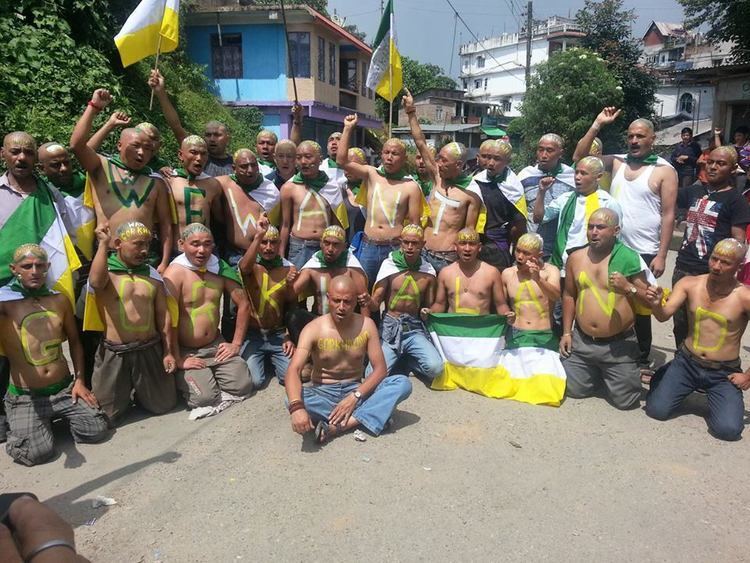 | ||
Indian Gorkhas (Nepali: भारतीय गोर्खा, Bharatiya Gorkha) are Nepali language-speaking Indian citizens. The term "Indian Gorkha" is used to differentiate between Gorkhas who are Indian citizens and those who are Nepali citizens and are allowed to stay in India as per the Indo-Nepal Treaty of Peace and Friendship (1950).
Contents
Indian Identity
Indian Gorkhas are citizens of India as per the Gazette notification of the Government of India on the issue of citizenship of the Gorkhas of India. However, the Indian Gorkhas are faced with a unique identity crisis with regard to their Indian citizenship because of the Indo-Nepal Treaty of Peace and Friendship (1950) that permits "on a reciprocal basis, the nationals of one country in the territories of the other the same privileges in the matter of residence, ownership of property, participation in trade and commerce, movement and other privileges of a similar nature". Thus, there are also many Nepalese citizens of Nepal living in India. The Indian Gorkhas are mistakenly identified as Nepali people, which has led to several movements of the Indian Gorkhas, including the Gorkhaland movement, for a clear recognition of their Indian identity and citizenship.
Demand for Gorkhaland state
The quest of the Indian Gorkhas for a distinct Indian identity has given rise to the demand for a state of Gorkhaland within the Constitution of India under Article 3(a). The Gorkhas believe that with the establishment of a state for the Gorkhas within India, every Indian Gorkha would have an Indian address that would quell any doubts of their Indian citizenship. The proposed state of Gorkhaland comprises the district of Darjeeling and the adjoining areas of the Dooars in North Bengal. Two mass movements for Gorkhaland have already taken place under the Gorkha National Liberation Front (1986–1988) and Gorkha Janmukti Morcha (2007–to date).
Castes and clans
The Indian Gorkhas are a mixture of Indo-Aryan castes and Mongoloid-featured clans. The Indo-Aryan castes include the Bahun (Brahmins), Chhetri (Khatriyas/Khatris), Thakuri (Rajputs), Kami, Damai, Sarki, etc. The Mongoloid/hybrid group is a heterogeneous mixture of various clans and ethnic groups, including Gurung, Magar, Newar, Tamang, Thami, Bhujel (Khawas), Rai (Khambu), Limbu (Subba), Sunuwar (Mukhia), Yakkha (Dewan), Sherpa, Yolmo, etc. Although each of them has their own language (belonging to the Tibeto-Burman or Indo-Burman languages), the lingua franca among the Gorkhas is the Nepali language with its script in Devnagari. The Nepali language, which is one of the official languages of India, is the common binding thread of all Gorkha castes and clans.
